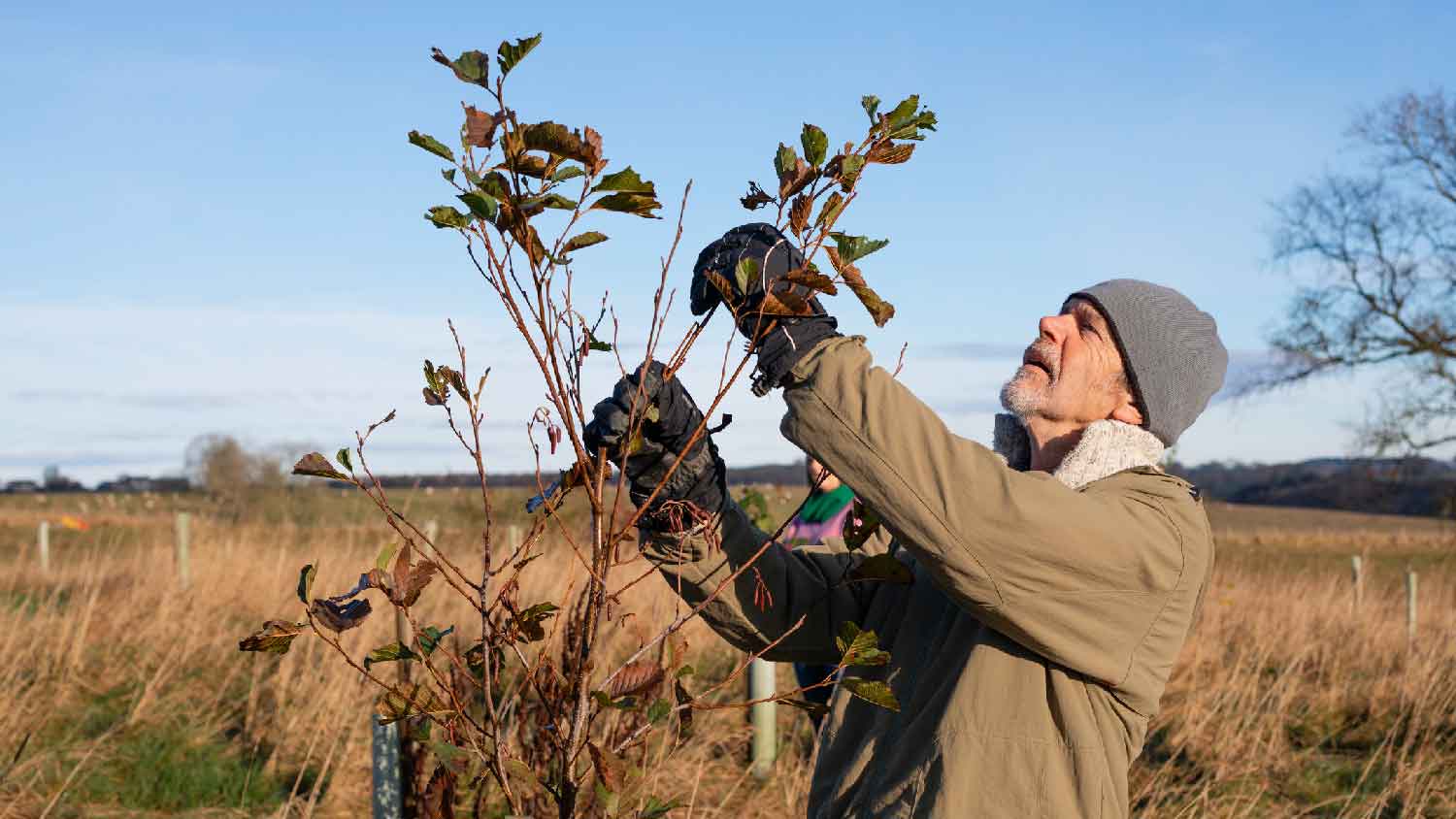
The cost to remove palm trees depends on several factors, including their size, location, and more. Our guide shows the average palm tree removal costs.
Don't give up on that late bloomer just yet


If your tree isn't bursting back to life after a frigid winter, you may be wondering, is my tree dead or dormant? Even if your tree doesn't look alive, it doesn't mean it's dead. Deciduous trees go dormant so they can survive harsh winters; dormancy can also be triggered by other factors, such as extreme stress and droughts. If temperatures are warming up but your tree lacks signs of life, use these five tips to help determine if your tree is dead or dormant.

Tree buds are signs of new branches, leaves, or flowers, and they vary in color, size, and shape. Dead trees will not produce any new buds. So if your tree has any signs of buds, you can be confident your tree isn’t dead. Various types of buds will appear to swell as your tree transitions from dormancy to new activity.
Another simple technique that can help determine if your tree is dead or dormant is to perform a scratch test. You will need to remove a small strip of the exterior bark to reveal the tree's cambium, which is the layer of the trunk that grows.
Carefully use a small knife to remove a small section of the bark. The cambium should appear green and moist if it's alive, which means the tree is just dormant. If the layer looks dry, gray, brown, or brittle, the tree could be dying or dead. You may need to check several spots to be sure.
Healthy tree branches should be a bit flexible; if the tree is dormant and not dead, its branches shouldn’t break or crack easily. You can test a small branch to see if it's flexible by carefully bending it to see if it snaps easily.
However, different trees may have more fragile branches than others, and harsh weather can also affect the branch's flexibility. So, keep that in mind before assuming the tree is dead.

It's essential to examine the tree's trunk for signs of damage. Look for cracks, splits, deep cavities, fungi, and missing bark. You should also look for signs of infestation from boring insects and other pests. If the trunk has these issues, it could mean the tree is dying or is dead if it's not showing signs of blooming.
Another thing to look for are signs the tree could have been struck by lightning. If the tree was struck by lightning, there will be obvious signs from it, such as scorch marks, a strip running down the tree with missing bark, and death of the tree canopy. While this isn't as common, it does happen and can kill a tree.
The next thing you should check is the tree's roots for signs of damage or other problems. Tree roots close to or breaking the surface may have signs of wounds. You can also check under the root's bark to see if it's dry and brown.
If fungi is growing near or on the base of the tree, it could mean there is rot. A tree that’s leaning could also indicate root issues, possibly stemming from rot or wind damage.
Even if your tree has signs it is dead and not dormant, you should hire an arborist near you to assess the tree to see if you can save it or if it should be removed.
From average costs to expert advice, get all the answers you need to get your job done.

The cost to remove palm trees depends on several factors, including their size, location, and more. Our guide shows the average palm tree removal costs.

Find out how much it costs to plant a tree based on the number of trees, their size, where you want to plant them, and DIY versus professional costs.

The cost of tree stump removal depends on size, removal method, location, and more. Our guide will show you how much stump removal costs.

If you have a strange branch growing from the roots of your tree, it might be a sucker. Here’s how to get rid of tree suckers without damaging your tree.

Tree felling requires strategic cuts to make the tree land accurately. Check out the types of tree felling cuts and notches used for various conditions.

When trees suffer a lightning strike, what happens to it? Here’s what happens, the factors at play, and what you can do about lightning strikes.